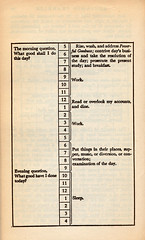Wow! Turns out the iPhone and 3G iPad have been secretly logging everyone’s GPS location in a local unencrypted database file ever since the release of iOS 4. The file is backed-up locally every time you sync your device with your computer, so it persists even if you replace your device. You can read more about the details on O’Reilly Radar.
Out of curiosity, I downloaded the app that uncovers this data, and sure enough, you can see nearly everywhere I’ve been for the last year or so.

The funny thing about this is I’m the type of person who would probably opt-in to a program that tracked my travels. I like being able to visualize the map above. However, the fact that Apple did this in secret, without my permission, clearly crosses into unethical behavior, whatever their intentions were/are.
The moral of this story is Steve Jobs is watching you!
There is something you can do though! You can join (or donate to) the EFF (Electronic Frontier Foundation). The EFF is the leading civil liberties group defending your rights in the information age.
Apple’s response should be pretty interesting.



